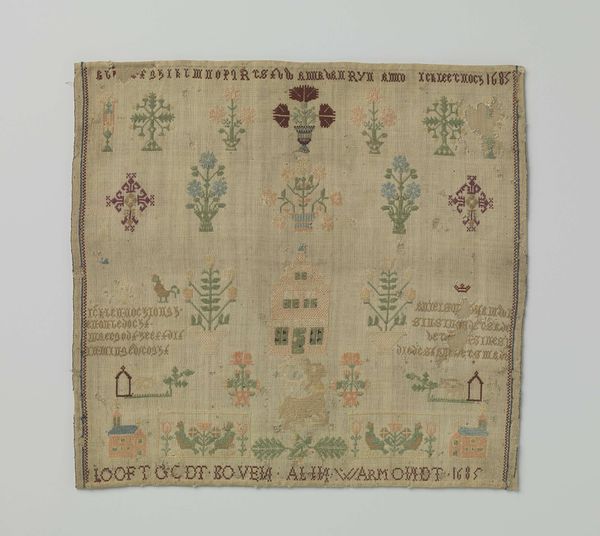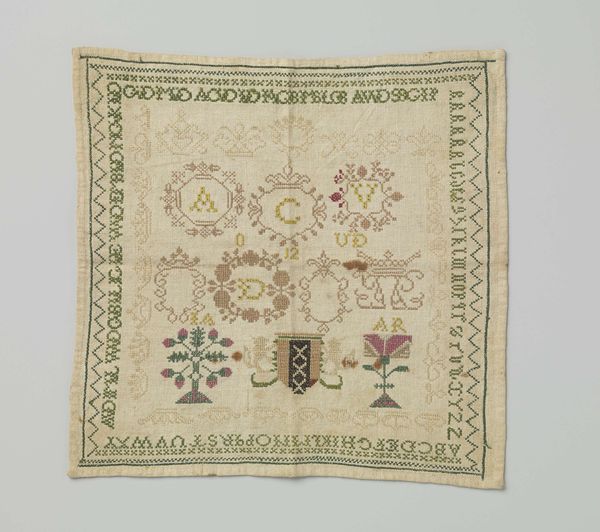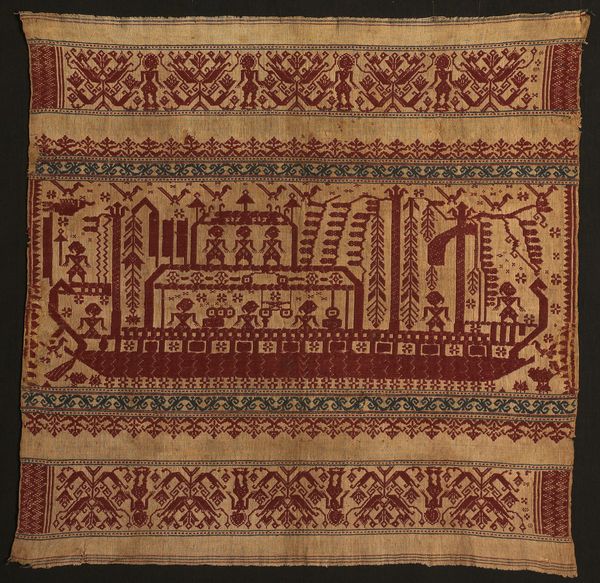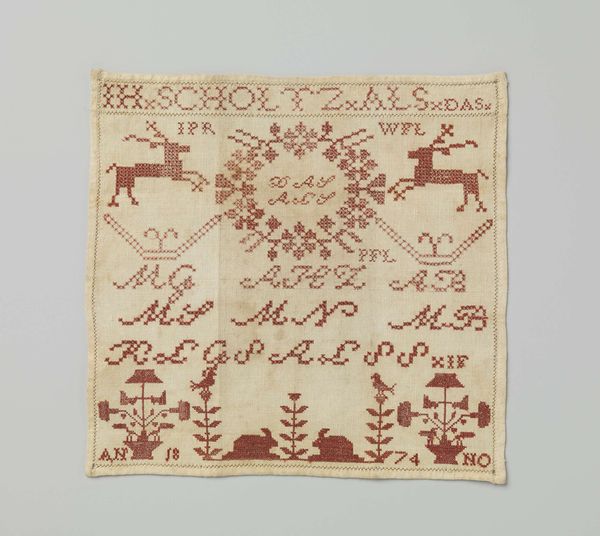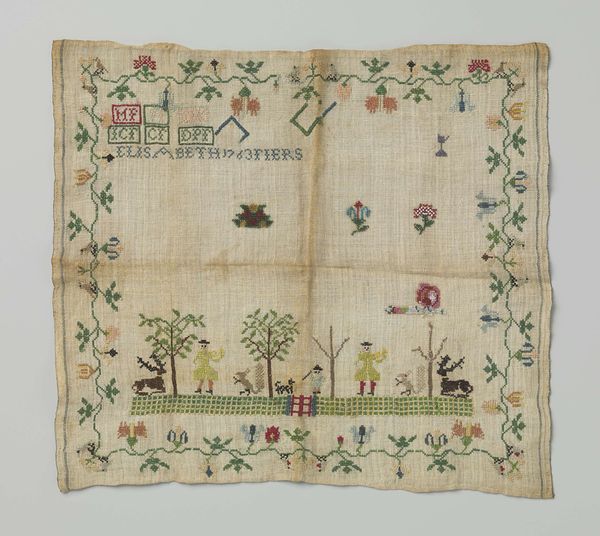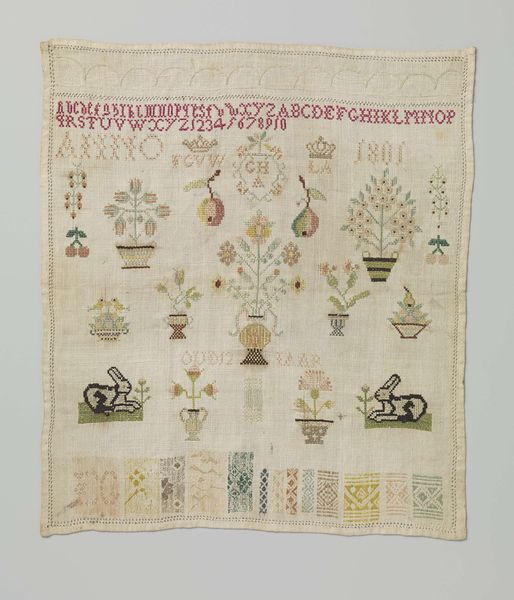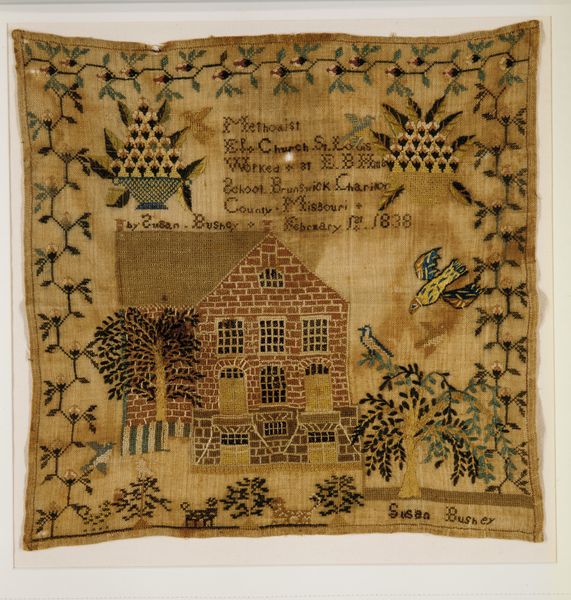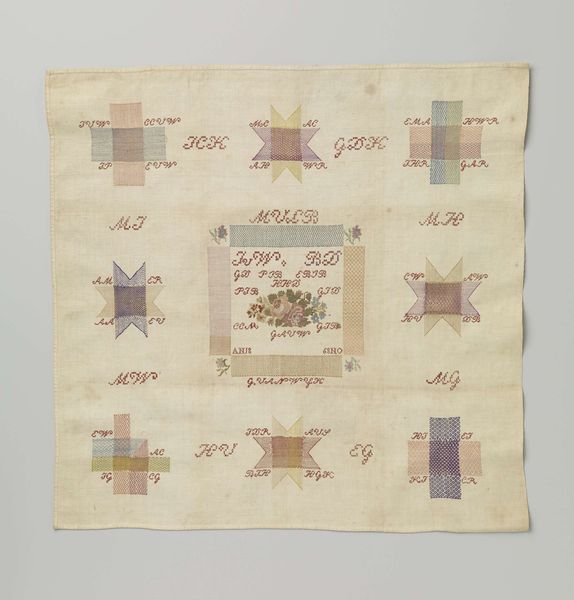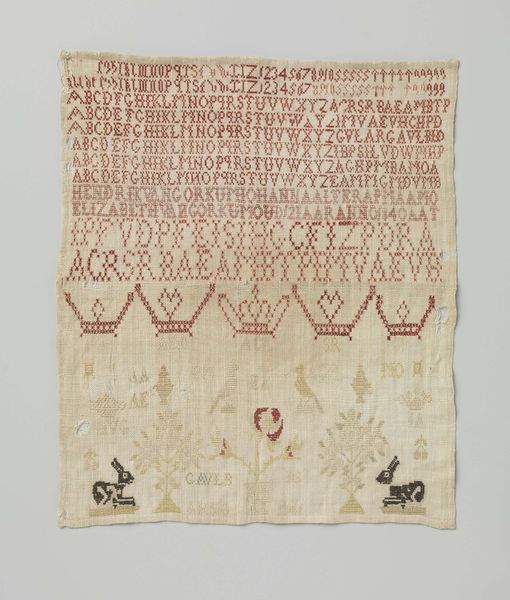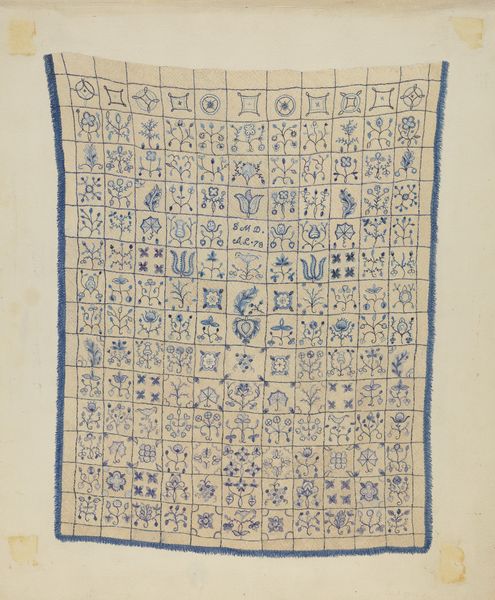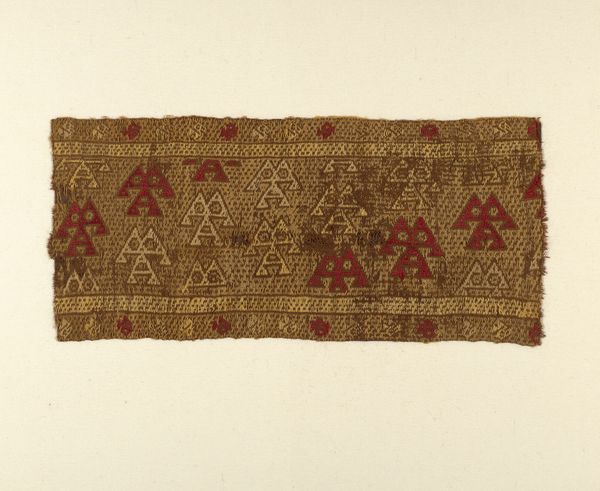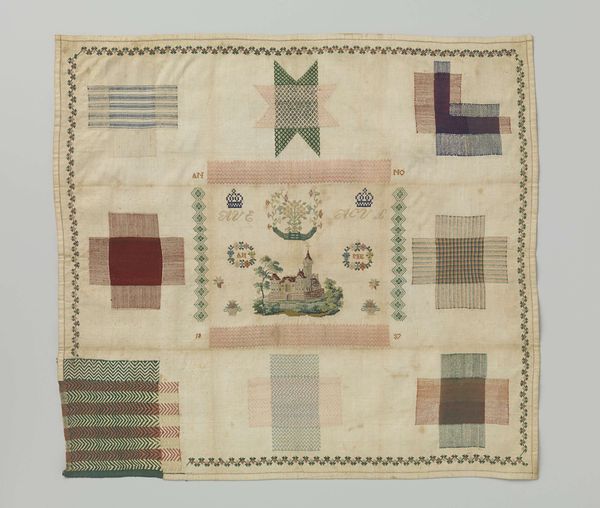
Merklap van katoen waarop met rode zijde A.DE.KAT.MDK.HAV.SDK.EDK.ZDK./ ICK MK/ ANNO 1857 en een aantal voorstellingen zijn geborduurd. 1857
0:00
0:00
fibre-art, textile
#
fibre-art
#
textile
#
figuration
#
fabric design
#
genre-painting
Dimensions: length 26.5 cm, width 28.0 cm
Copyright: Rijks Museum: Open Domain
Editor: This cotton sampler from 1857, embroidered in red silk, is titled “Merklap van katoen…”. It feels like a little world, dense with images. What do you see in this piece? Curator: Well, first off, this "merklap," or sampler, isn't just decoration. Think of it as a visual language, each motif a symbol carefully chosen and rendered in thread. The animals, the figures, the floral patterns… each element carried its own cultural weight. What do these symbols suggest to you? Editor: I'm drawn to the figures – are they generic or meant to represent someone specific? Curator: Probably archetypal figures representing roles, such as motherhood. Consider the images in relation to each other, also alongside the dates and letters – what could they represent? We might also ask, “where do these motifs come from?” Editor: You mean like, were they traditional designs, or unique to the maker? The boat, for instance – is it literal, a representation of daily life, or symbolic? Curator: Exactly. Was this a coastal community, where ships played a central role? Or could the boat symbolize a journey, a life's passage, or a spiritual quest? Even the act of stitching itself carries meaning, evoking patience, skill, and the transmission of knowledge from one generation to the next. Editor: It’s amazing how much can be communicated through such simple forms. I’ll definitely look at samplers differently now. Curator: Indeed! By learning how to decode their visual language, we gain insight into the worldviews and lived experiences of those who created them. The images whisper secrets across centuries.
Comments
No comments
Be the first to comment and join the conversation on the ultimate creative platform.
